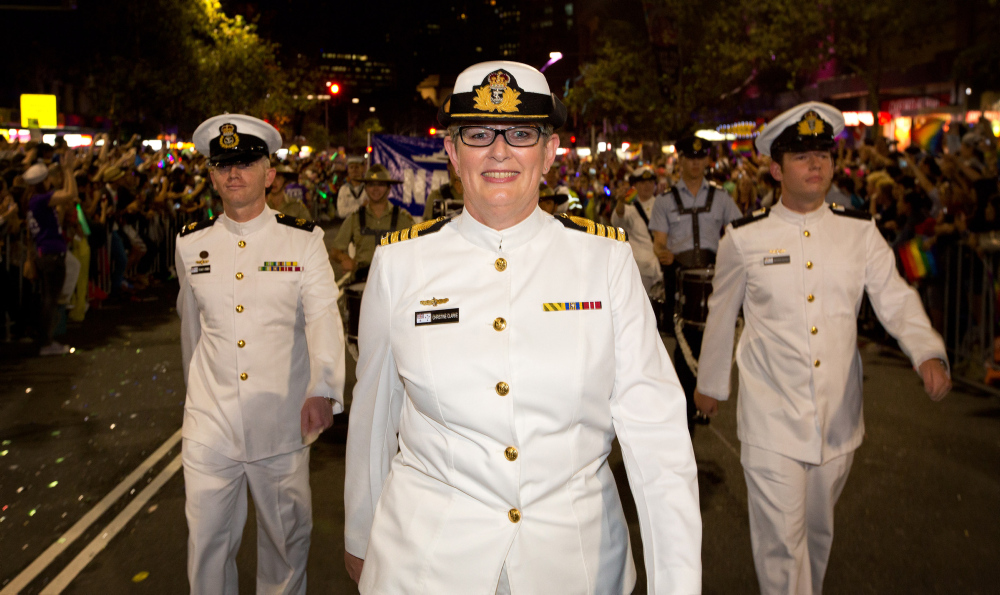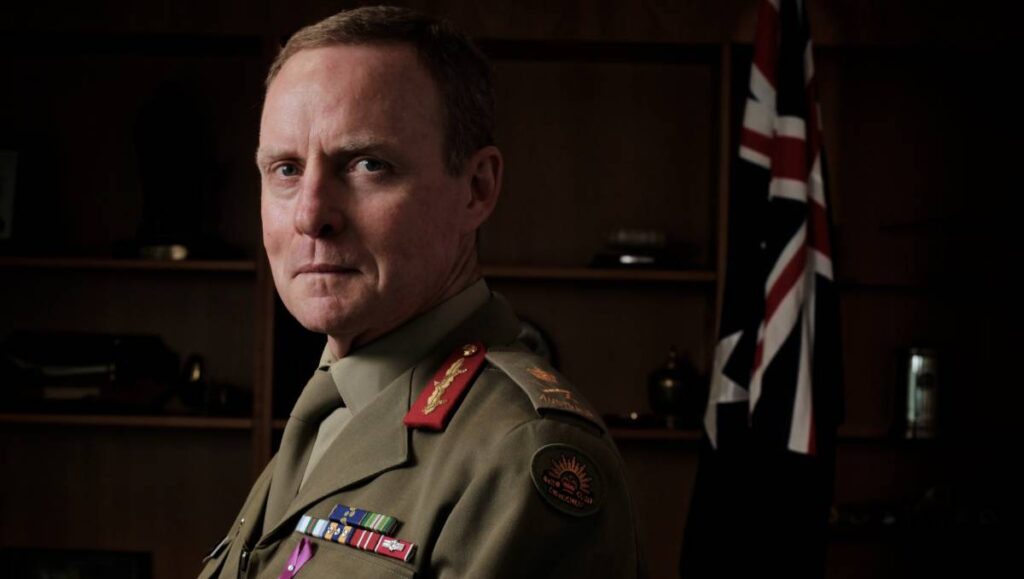“Although homosexual behaviour is not a frequent occurrence in the [defence] services, it is not acceptable”. The year was 1976. The statement approved by Sir James Killen, the then-Minister for Defence was factually wrong.
Sometimes those in power see only what they want to see. And so it was for gay men – and women to a lesser degree – in the Australian Defence Force from World War II onwards.
As authors Noah Riseman and Shirleen Robinson note in their new book Pride in Defence: The Australian Military & LGBTI Service since 1945, while homosexuals were officially banned until 1992, there was a long and mostly secret history of their service for the nation.

Captain Christine Clarke leads the Australian Defence Force contingent in the 2014 Mardi Gars parade.
For women, in particular, the military offered a refuge from social expectations of marriage and the handful of jobs – nursing, teaching, retail – that were available to unmarried women at the time. Others gravitated there for its “vibrant lesbian subculture”.
“The [armed services] offered a lot of women – even some who didn’t realise their sexuality – the means of doing something a bit different from the path expected of them when they left school,” Robinson tells BroadAgenda.
For women, in particular, the military offered a refuge from social expectations of marriage and the handful of jobs that were available to unmarried women at the time
“They got to travel and learn highly specialised skills. And a lot of women, once they got there, found quite interesting networks that existed despite the risk of being exposed would result in you being discharged.”
There was also, unsurprisingly, a great deal of hypocrisy. While lesbianism was never illegal in Australia – unlike homosexuality in men – it was the women who were most targeted and witch-hunted by the powers that be.

The book tells the story of Helen, who joined the Women’s Royal Australian Army Corps (WRAAC) in the 1960s because she “wanted to meet other lesbians’. She found a career she enjoyed – and plenty of other women like herself. But after three years Helen was dishonourably discharged when her sexual preference became known – ironically by a “hypocritical woman major who I knew was a lesbian herself’.
As Helen explained to the authors, “the higher the rank, the more likely the woman was lesbian because straights mostly married and had to leave”.
As another interviewee noted, when she joined the WRACC in 1971, of the intake of 80 women, only 15 were left after three years – the only ones not to have married. Which also, loosely, proves the point made by one solider in 1971: “I would say that the incidence of homosexuality in the forces is greater than the conventional 5% [estimated in the general population]. The military provides an all-male environment and as long as the solider is reasonably careful and discreet, problems seldom arise”.
The higher the rank, the more likely the woman was lesbian because straights mostly married and had to leave.
While gay male personnel were left largely untargeted until much later – despite homosexuality being a criminal offence – Robinson says that witch hunts for lesbians were commonplace.
“The reason might be because of the traditional gender roles of the time. A male who joined the military was seen to be exemplifying Australian ideals of masculinity. But for women, they were stepping outside the bounds of what was socially acceptable in many ways. These were women who were driving massive trucks, doing complicated cartography work, intelligence work and so on,” says Robinson.
“So lesbian women were more likely to be attracted to life in the military than straight women. And the military put a lot of effort to finding them. If they were able to prove someone had been involved in same-sex activity, a fairly brutal process of interrogation and expulsion would follow.”

David Morrison, former army chief.
The book charts the journey of the ADF and its attitudes towards perceived “difference”. Gay and lesbian people were allowed to join in 1992 and 18 years later transgender people were given the same rights.
“The journey of the ADF in the time period we look at in the book is quite remarkable. And it shows that a conservative institution has the power to change. And that change happened because the ADF realised that there is strength in diversity,” Robinson says.
The ADF has adopted three broad strategies towards LGBTI people over the past 75 years: rejection, tolerance and inclusion. Certainly, the ADF has come a long way since Sir James Killen approved the statement about the rarity of homosexual behaviour. At the time, the ADF “drew a distinction between men and women whose sexuality was considered ‘untreatable’ and those who might be considered to be ‘situational’ lesbians or gays.
By 2012, the Chief of Army, Lieutenant General David Morrison had totally reversed that position, telling the conservative think tank the Sydney Institute “sexual orientation … isn’t an issue and nor should it be. We have many very proud gay and lesbian soldiers, airmen, airwomen and sailors serving in our ADF”.
In 2010, transgender people were allowed to serve – well ahead of US and UK armed forces.
“By allowing people to serve as who they are, regardless of sexuality or gender identity of intersex status expands the pool of people who can join up,” Robinson says.
The ADF realised – long before many other conservative institutions – that there is strength in diversity.
The post LGBTI military personnel and the march of history appeared first on BroadAgenda.
This post was originally published on BroadAgenda.

